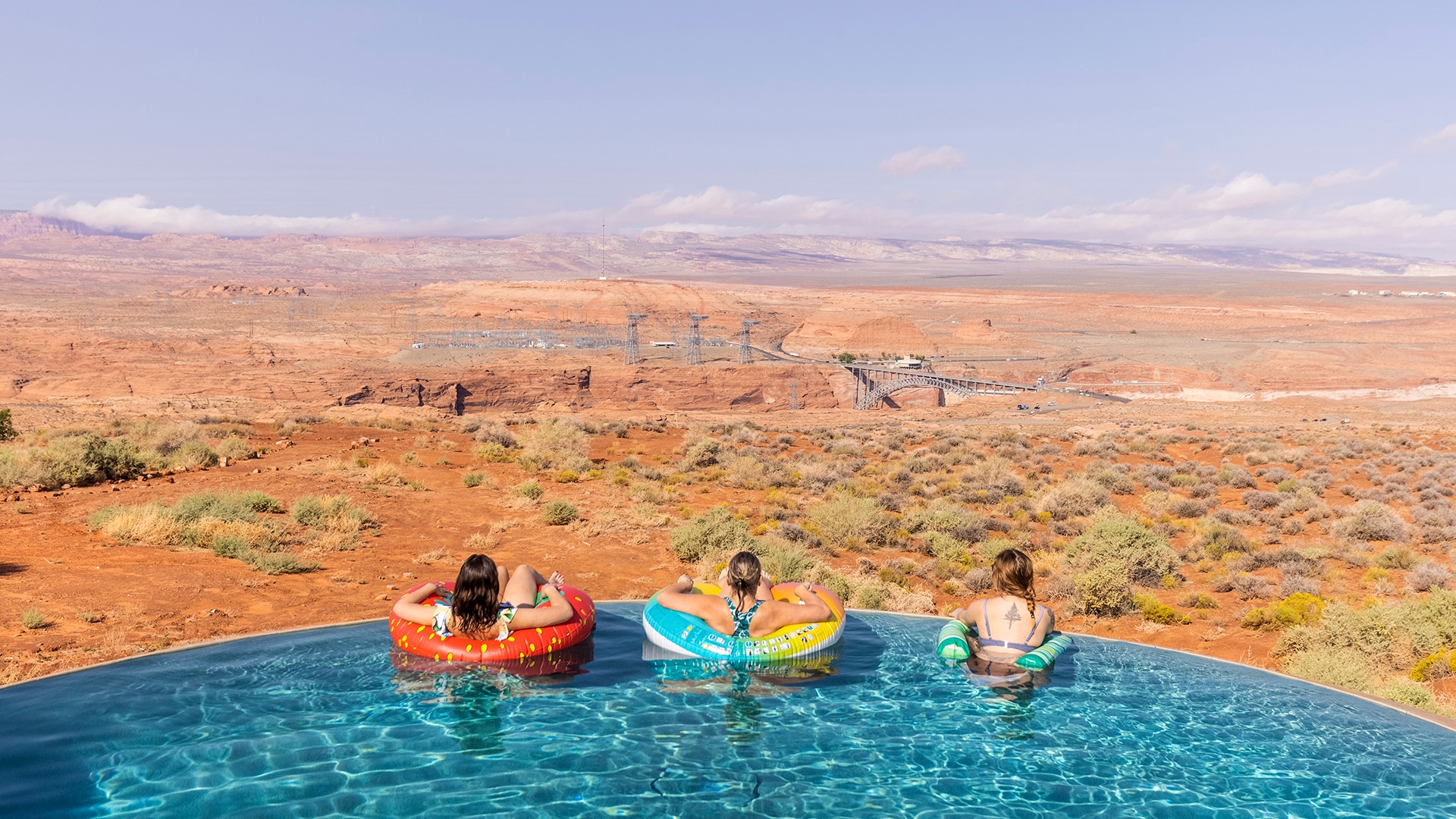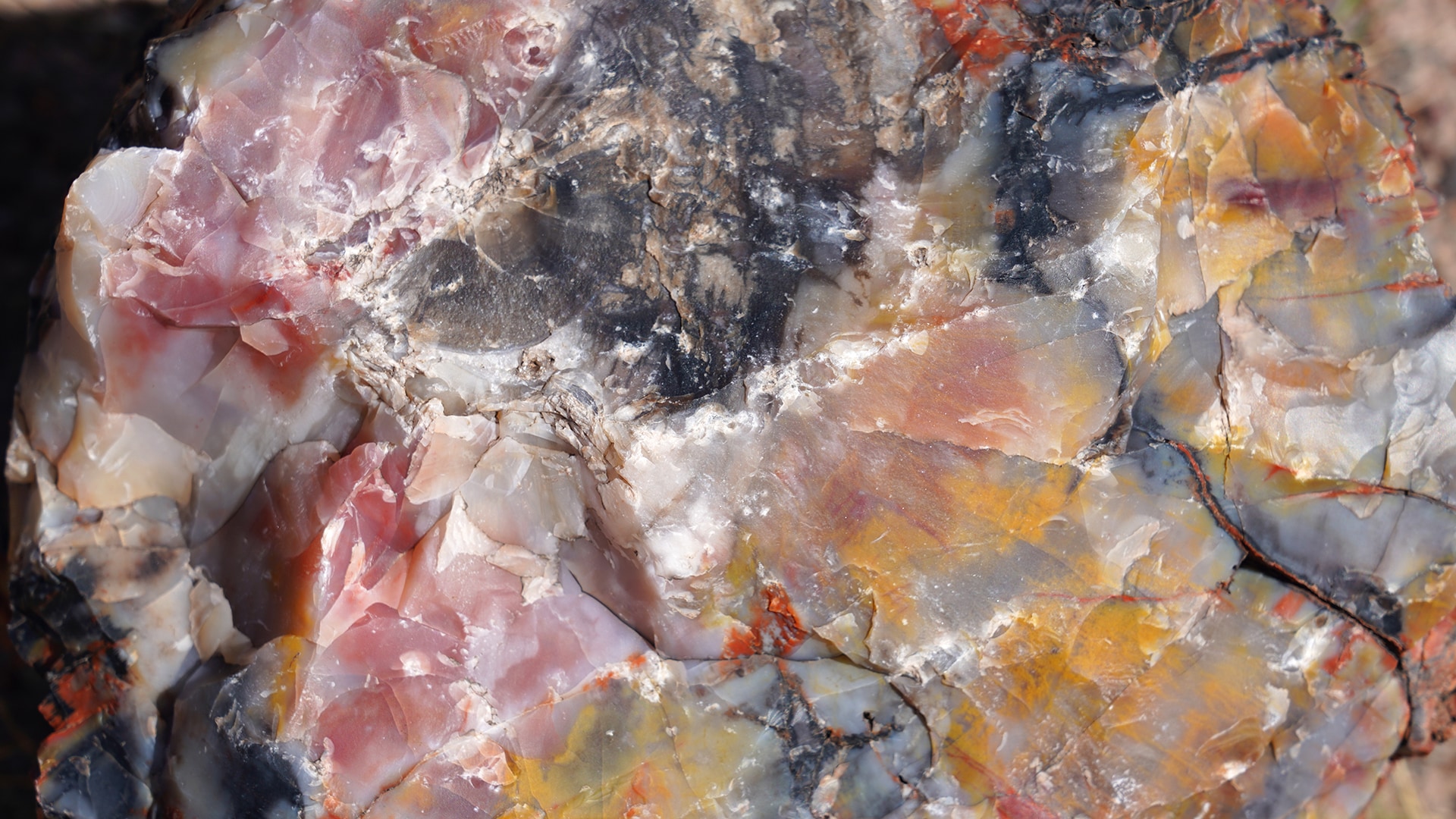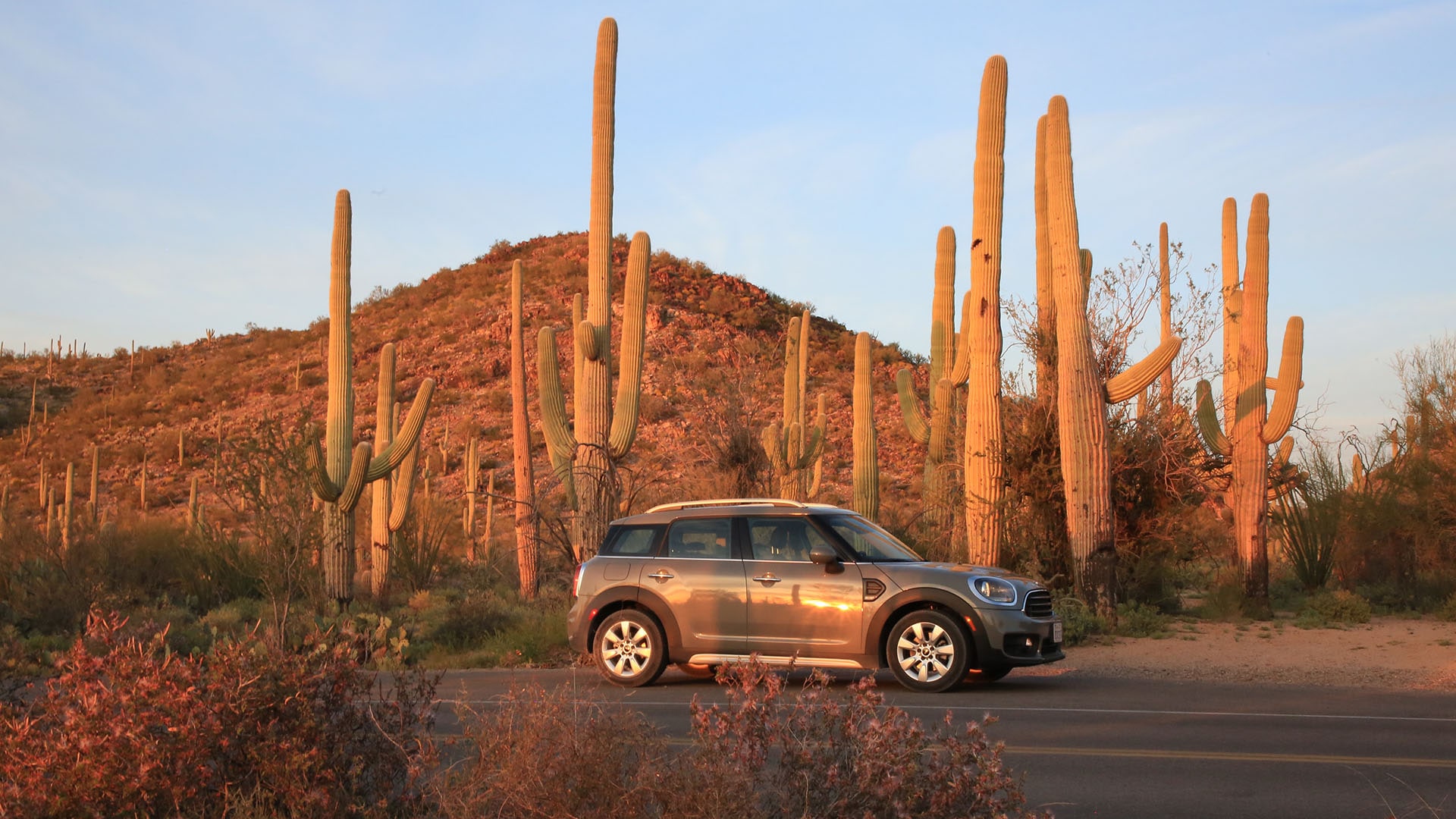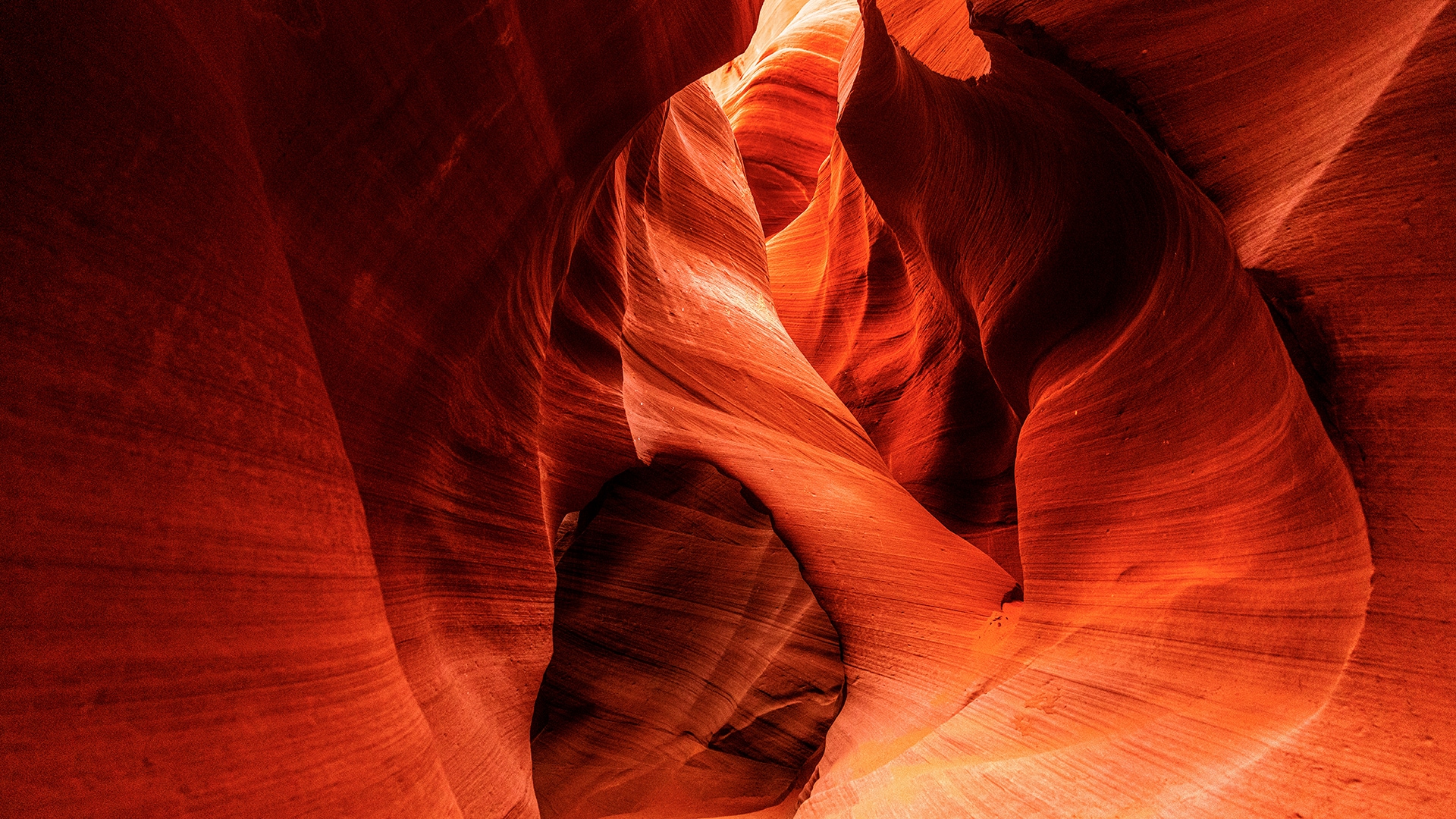Canyon de Chelly: A Drive to the Home of the Navajo
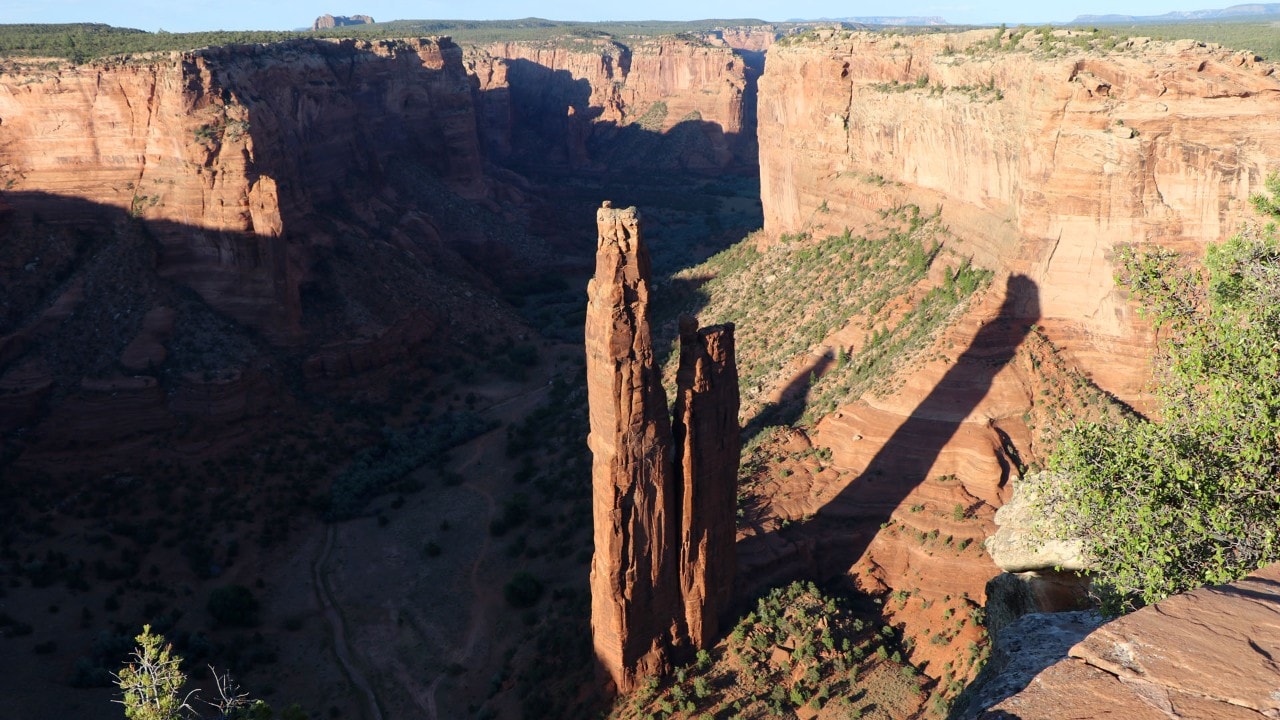
Spider Rock casts a long shadow as the sun sets on Canyon de Chelly.
Story and photos by Tom Uhlenbrock
Tom is an award-winning travel writer and journalist based in St. Louis.
Native American land inspired an iconic art form.
As the sun set on Canyon de Chelly National Monument, a shadow crept up Spider Rock, the 800-foot-tall spire that is the centerpiece of the red-rock landscape. When the rays dropped behind the canyon walls, the last light went out at the spire’s top, like someone pulled a switch. The evening had another heavenly showing, and the second act was close behind.
On the eastern horizon, the golden orb of a full moon ascended, casting the deep canyon in an eerie light.
We lingered at our perch 1,000 feet up on the canyon rim to enjoy the show, then headed back on the short walk to the parking lot. Our rental car was the last on the lot, but we were not alone. Six cows blocked our path and took their time moseying off. This country is open range, and you share the roads, and parking lots, with cattle, horses, sheep and goats.
Canyon de Chelly (de-SHAY’) is in northeast Arizona, near the Four Corners where Arizona, Utah, Colorado and New Mexico touch. This is the heart of the Native American culture of the Southwest, home of our national collection of prehistoric ruins.
The canyon is within the Navajo Nation, an expanse of flat-topped mesas, forested mountains and sheer-walled canyons. At 27,000 square miles, it is America’s biggest Indian reservation, larger than 10 of the 50 states.
Because the canyon floor is an oasis of green in the high desert, Canyon de Chelly has been attracting the first Americans for some 5,000 years. Today, it is home to ancient ruins and to about 65 Navajo families who farm and tend sheep.
The National Park Service administers the monument, but the canyon belongs to the Navajo, who carefully guard it. Outsiders enter only with a Navajo guide, and visitors are asked to respect the privacy of the residents.
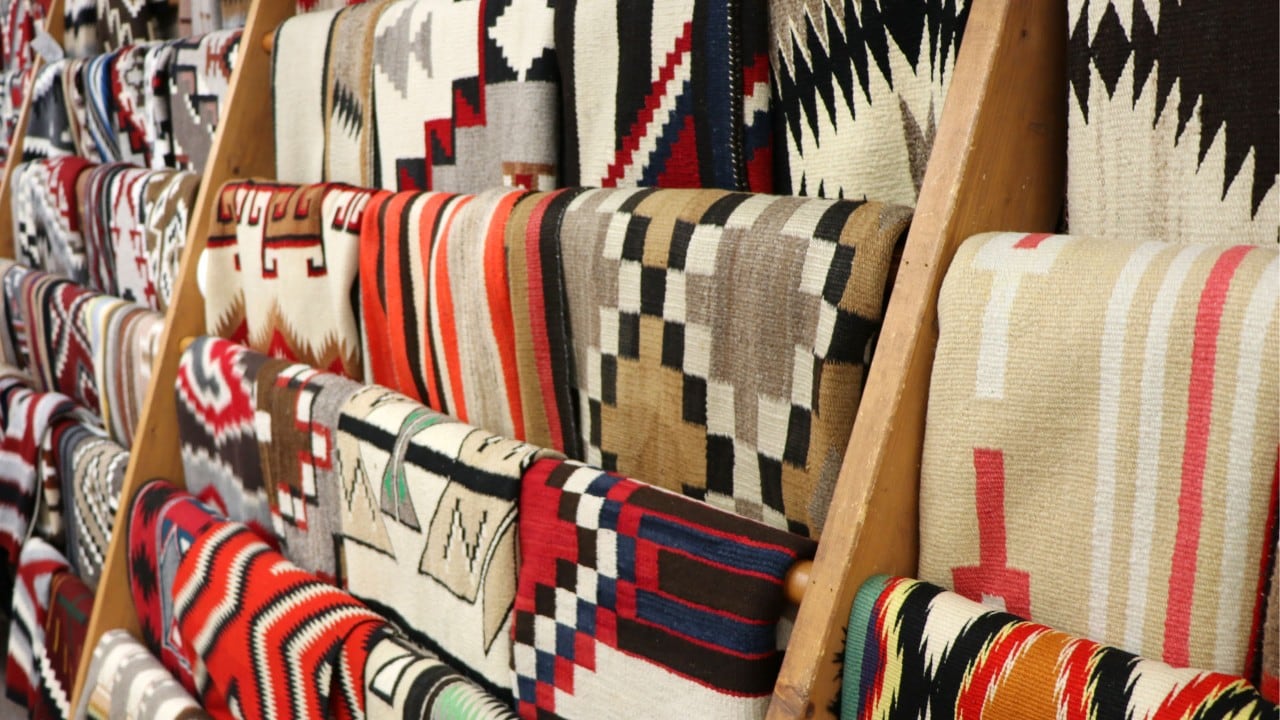
Navajo weavings line a wall of the Notah-Dineh Trading Co. in Cortez, Colorado.
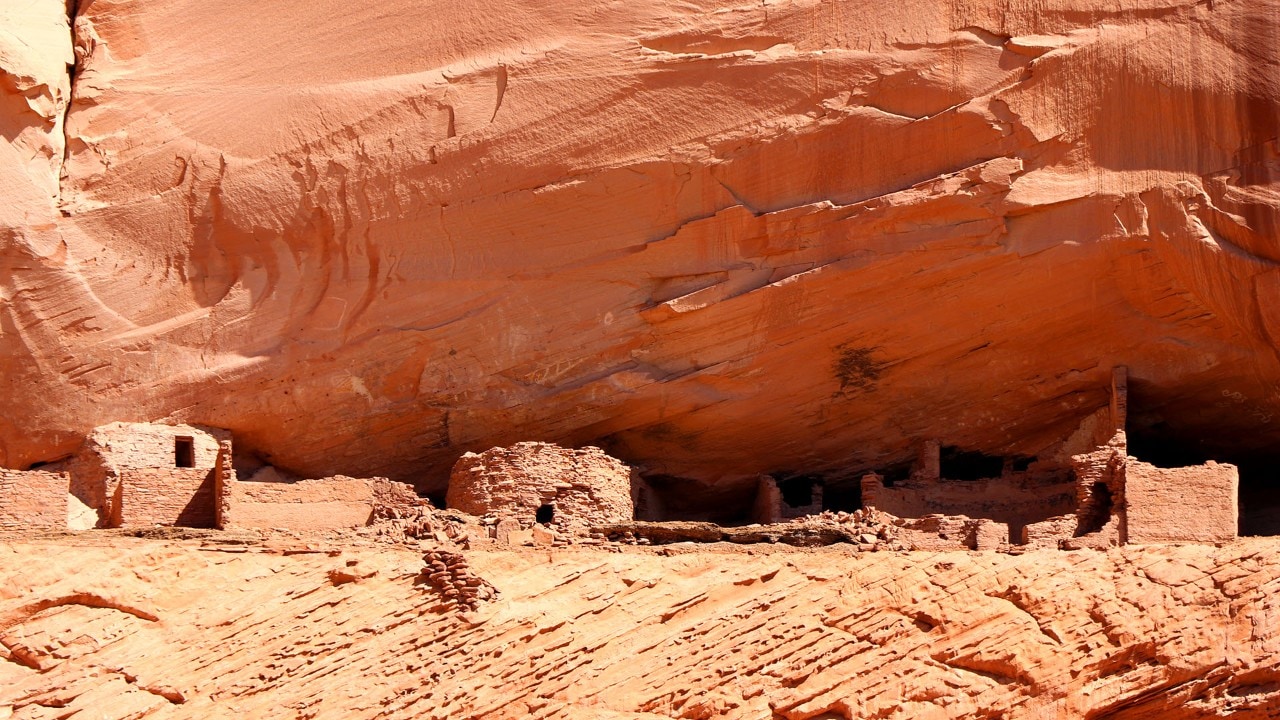
First Ruin sits in an alcove high up a canyon wall.
While most come to the canyon because of its natural beauty and archaeological treasures, my visit was something of a pilgrimage. Upon graduation from college, I was roaming the West Coast and paid $100 for a Navajo rug at a San Francisco flea market.
The rug became my bedroll for the summer and sparked a lifelong interest in Navajo weaving, the iconic art form that has its origin in Canyon de Chelly.
According to Navajo lore, Spider Woman lives atop Spider Rock and came down to teach the Navajo how to weave. Navajo women still set up their looms in the shade of the canyon’s cottonwoods and weave their magic.
The earliest weavings were blankets with simple stripe patterns that were worn over the shoulders. Tightly woven and bearing a subtle beauty, the blankets were coveted by members of the Plains tribes. The Navajo have no chiefs, but the weavings became known as “chief’s blankets” because they graced the back of many a Sioux and Cheyenne leader, who would offer up to 10 horses in trade.
When the white man brought man-made Pendleton blankets to the frontier, Navajo women no longer needed to work six months to a year to prepare wool and weave a blanket. Traders kept the art form alive by urging the Navajo to make larger weavings with borders that could be used as floor rugs to be marketed back East.
Trading posts like the one at Thunderbird Lodge, the Navajo-run motel at the entrance to Canyon de Chelly near the town of Chinle, offer the colorful rugs and wall tapestries brought in by the Navajo weavers. A small textile sells for a few hundred dollars, while a larger, tightly woven wall hanging will cost several thousand.
The fine-wearing blankets woven in the mid-1800s command top dollar among collectors and museums. In June 2012, an elegant chief’s blanket woven in 1840 sold for $1.8 million at a California auction.
The shocked owner, who was unemployed and living on disability checks, said the blanket was a family hand-me-down that his grandmother got out whenever the cat was about to have kittens.
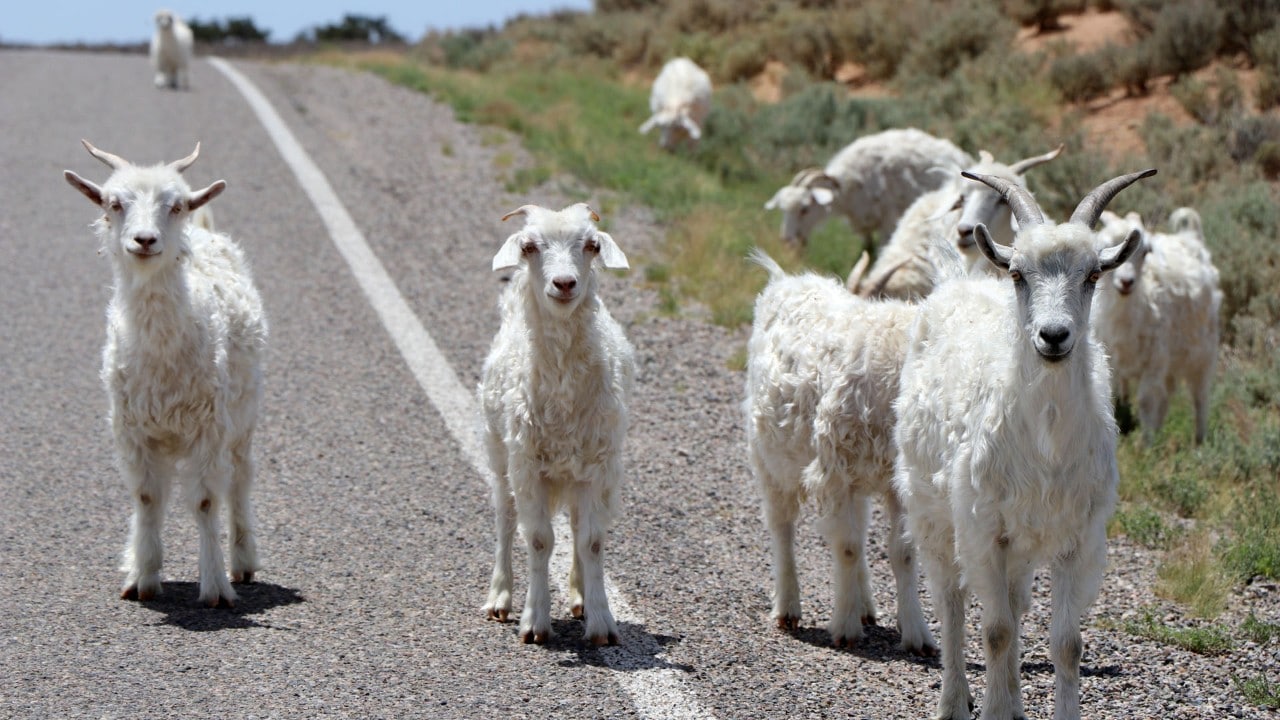
Visitors share the roads with goats
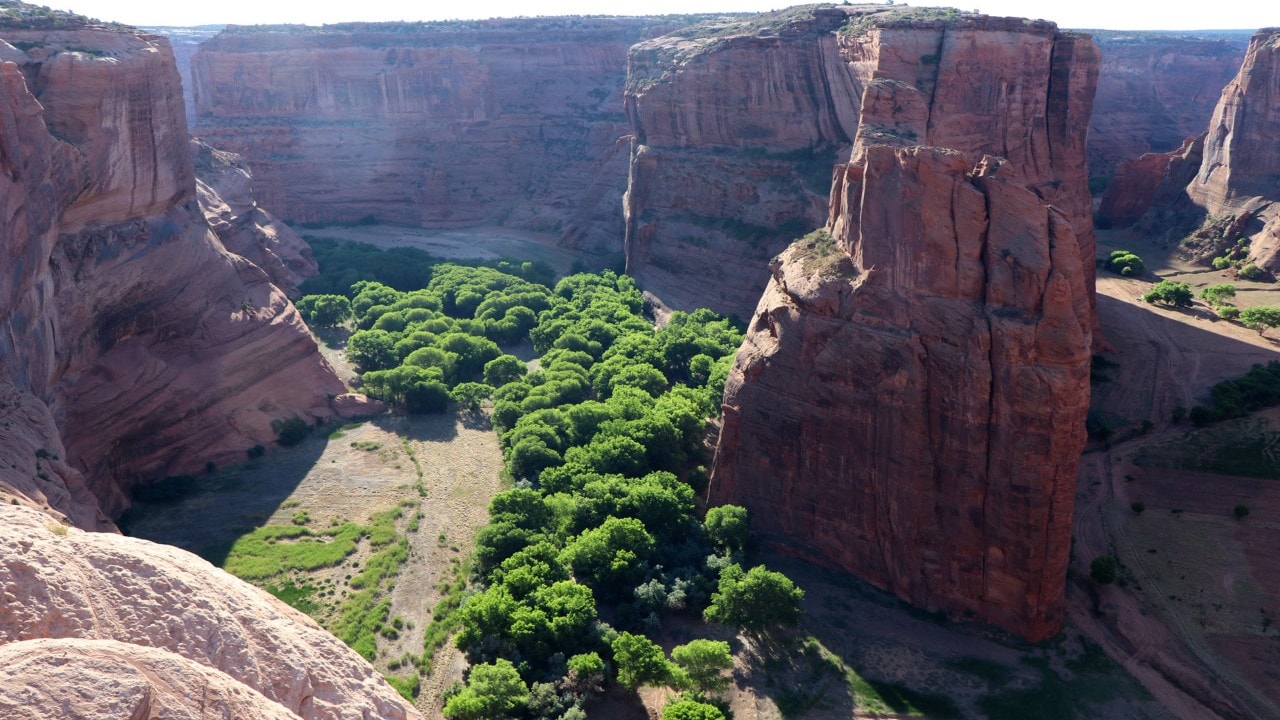
Morning light highlights the cottonwoods on the canyon floor.
Summers in the Canyon
The Navajo migrated from Canada to Canyon de Chelly, arriving in the late 1700s. They planted crops and orchards and enjoyed a tranquil life. That was interrupted in the winter of 1864 when Col. Kit Carson arrived to quell the periodic fighting between the Navajo and their neighbors.
The U.S. troops marched the Navajo more than 300 miles to Fort Sumner in New Mexico territory. The experiment to relocate the tribe ultimately failed four years later, and they were allowed to return to the canyon.
Only the descendants of those who made the “Long Walk” back home are allowed to own land in the canyon today. “The land can’t be sold, only passed on to the oldest female,” said Harris Hardy, a Navajo guide who grew up in the canyon and whose great-great-grandmother made the walk as a young girl.
The canyon was his playground as a child, and he still lives there in the summer. Like most canyon residents he moves to the rim in winter to allow his three children to attend school.
As Hardy drove me through the canyon, he stopped to point out prehistoric rock carvings, ruins and geologic features. He talked about the plants and animals, with an occasional bit of humor. “My summer home is still the canyon; my winter home is in Florida — Key West,” he joked.
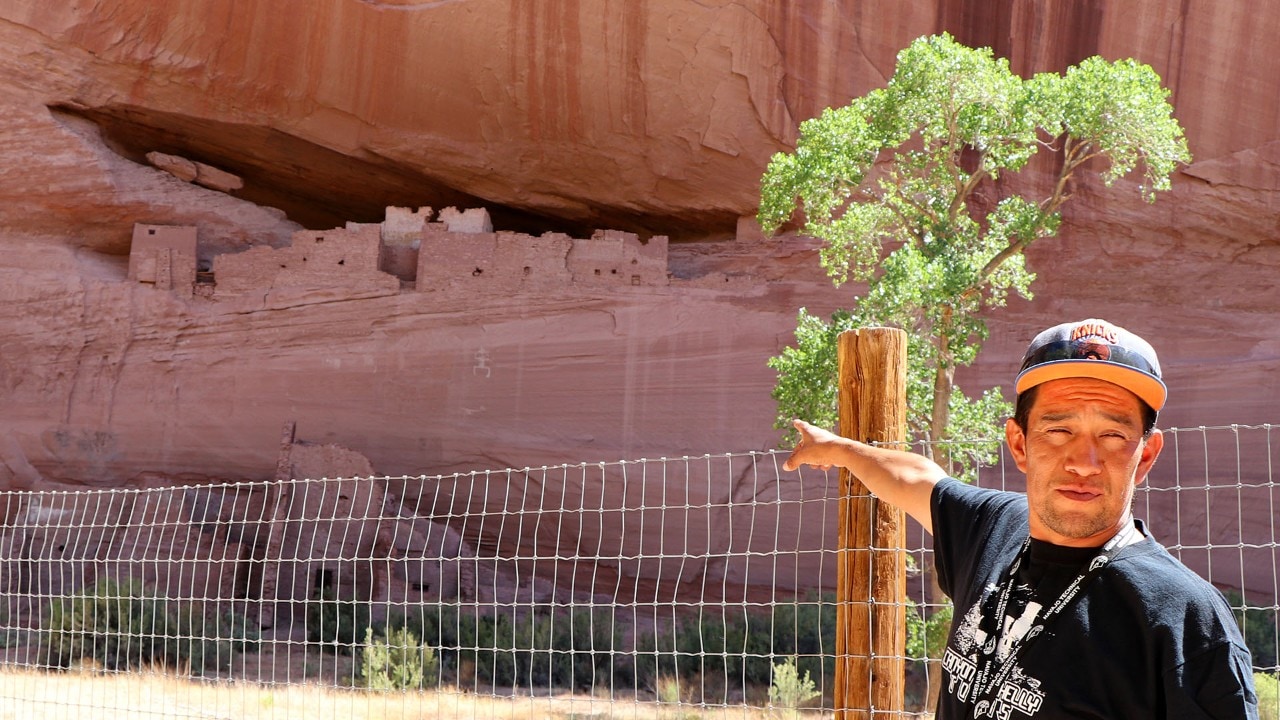
Navajo guide Harris Hardy points to a rock drawing below the buildings

The visitor center at Canyon de Chelly features an example of a furnished Navajo hogan.
No Need to Hurry
Most visitors to the canyon begin their exploring by taking the north and south rim paved drives, which lead to 10 overlooks, including the short walk to see Spider Rock. Many then choose to enter the canyon with a Navajo guide on foot, horseback or four-wheel-drive vehicle.
There is a third way to enjoy the canyon — a 2.5-mile, round-trip hike from the White House Overlook down to the ruin on the canyon floor. No guide is required.
The trail is well built and well maintained with benches to rest on during the climb in and out of the canyon, a 600-foot change in elevation. Steps are carved into the sandstone; there are even two tunnels chiseled out of the canyon wall to create a route for hikers.
Built some 800 years ago, White House is the most majestic setting of the canyon’s many ruins, with cliff dwellings in an alcove and a masonry pueblo on the canyon floor. Mineral stains streak the cliff face in a beautiful display of what geologists refer to as “desert varnish,” and the Navajo call “Mother Nature’s hair.”
I got an early start to beat the summer heat and was heading back up when I encountered another solo hiker coming down. He was a Canadian, and we commented on our similar slow pace. I take it a step at a time to enjoy the lizards, wildflowers and vistas, especially when going uphill.
He gazed out over the scene and agreed: “Why would you want to hurry in a place like this?”
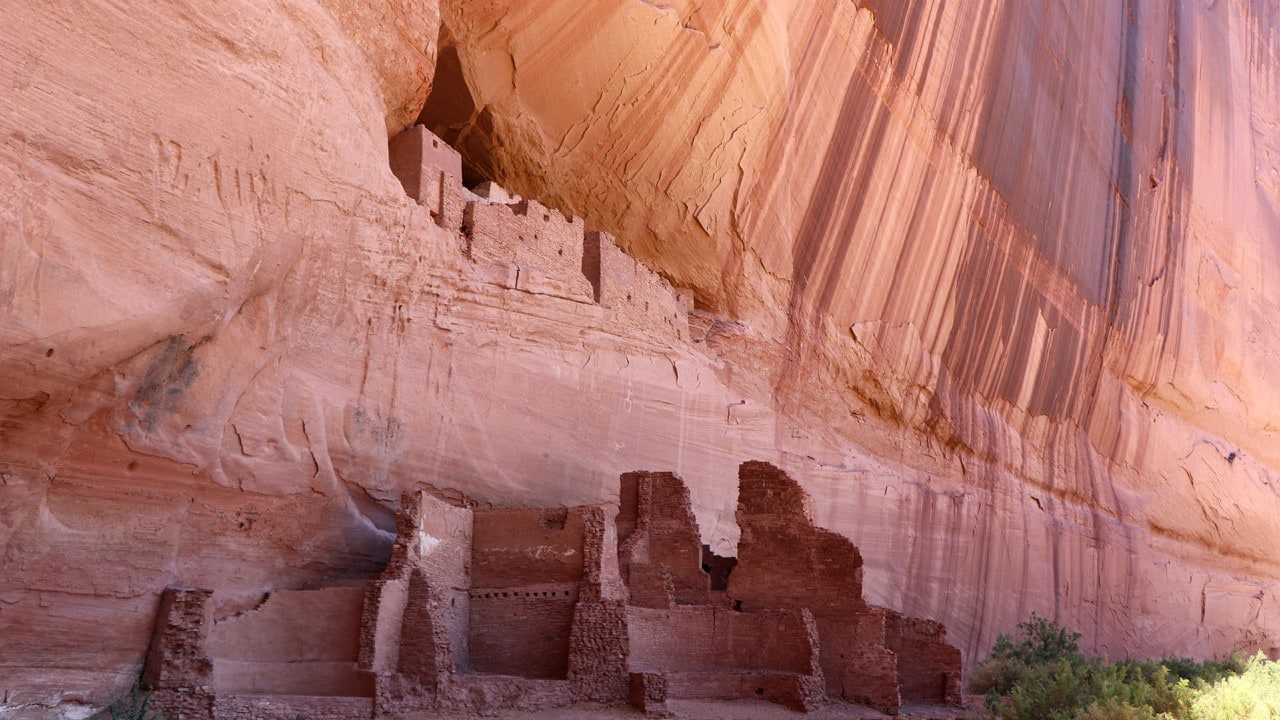
White House Ruin has the most majestic setting of the canyon's many ruins
Related
Read more stories about Arizona.
- National Park Tradition Renews Family Ties
- Road Trip to Five National Parks Near Los Angeles
- Grand Canyon Hike
- Family Reunion in Arizona
- Nostalgic Route 66 Road Trip: Santa Monica to Albuquerque
- Romantic Getaway in Sedona, Arizona
- Road Trip to Canyon de Chelly National Monument
- Petrified Forest National Park
- Hot Air Ballooning in Arizona
- Road Trip to Saguaro National Park
- Photographing in the American Southwest
- Arizona Trips




